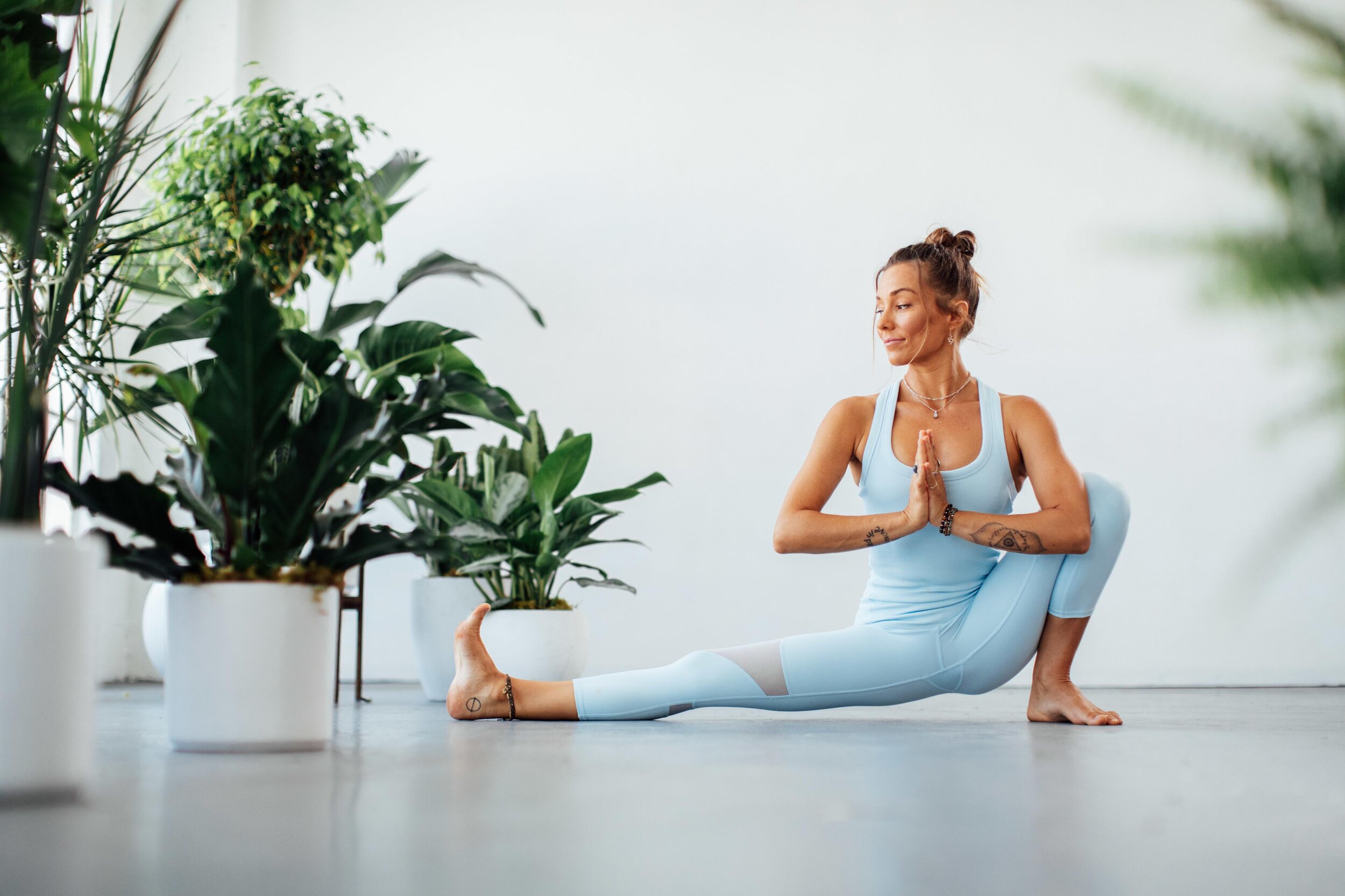How to Practice the Five Niyamas in Yoga
Yoga practice goes far beyond the physical poses. It was originally presented as a way of life, with asanas — or postures — being only one part of it. In the very early centuries CE, philosopher and sage Patanjali compiled yogic wisdom into the Yoga Sutras, a detailed guide for yogic life in verse.
The Eight Limbs of Yoga, a set of guiding principles for practicing yogic principles in every aspect of your life, were first outlined in the Yoga Sutras. The first limb, yama, outlines how we can use self-restraint to walk the right path. The second limb, niyama, flips it to active observances and deeds for living an intentional life.
You can dive deep into the five yamas with Alo Moves instructor Naya Rappaport, then keep reading for how you can incorporate the niyamas into your life.
What are the five niyamas?
Saucha: Purity
Santosha: Contentment
Tapas: Self-discipline, building heat
Svadhyaya: Self-reflection
Ishvarapranidhana: Self-surrender, self-actualization, worship
How to practice Saucha
Cleanliness of mind, body, and thoughts.
On the mat:
Clear your mind before practice with a silent meditation.
Start class with pranayama, or breathing exercises.
Work toward greater stillness in Savasana.
Clean your mat before and after practice.
Incorporate sound baths.
Off the mat:
Bathe and wash your hands regularly.
Cook healthy food that makes you happy.
Be honest with yourself and those around you.
2. How to practice Santosha
Contentment with circumstances, surroundings, and the actions of others. Finding joy.
On the mat:
Let external distractions, like construction noise, flow past you without getting hung up on them.
Find stillness in challenging poses.
Accept any limitations that you are experiencing in your practice.
No matter what practice looked or felt like, thank your body for its hard work.
Off the mat:
Be content with what you have.
Don’t get caught up in external drama.
Think before you hit “check out” while you’re shopping online.
3. Tapas
Self-discipline, resolve, burning away things that don’t matter.
On the mat:
If you can do it without pain, hold that difficult pose for just a few seconds longer.
Work on a new skill — and commit to it.
Start practice with an intent or resolve. Afterward, act on any newfound clarity.
Off the mat:
Stay engaged in difficult conversations that could help you grow. (If it’s just needless drama or trolling, refer back to Santosha.)
Tackle all your difficult tasks and chores right away so you can bring your full awareness to the ones that bring you joy.
4. Svadhyaya
Self-reflection, self-study.
On the mat:
Film your home practice (but be kind to yourself).
Listen to your body during practice. Is there a place you could push harder? Are there poses where you need to pull back?
Off the mat:
Ask yourself what you stand for and whether you’re actually standing for it.
Take stock of where you’re putting your energy. Is there a way to shift some of it toward a greater good?
Ishvarapranidhana
Self-surrender, reverence, worship.
On the mat:
Dedicate your practice to someone important to you or a force for good.
Visualize devotion, whether it’s a vision for the world or something that symbolizes your belief system.
Off the mat:
Volunteer for a good cause that you find personally fulfilling.
List your own guiding principles and consider how you can use them to become your best self.
Ready to expand your mindfulness practice? Explore hundreds of classes with a 14-day free trial to Alo Moves.


